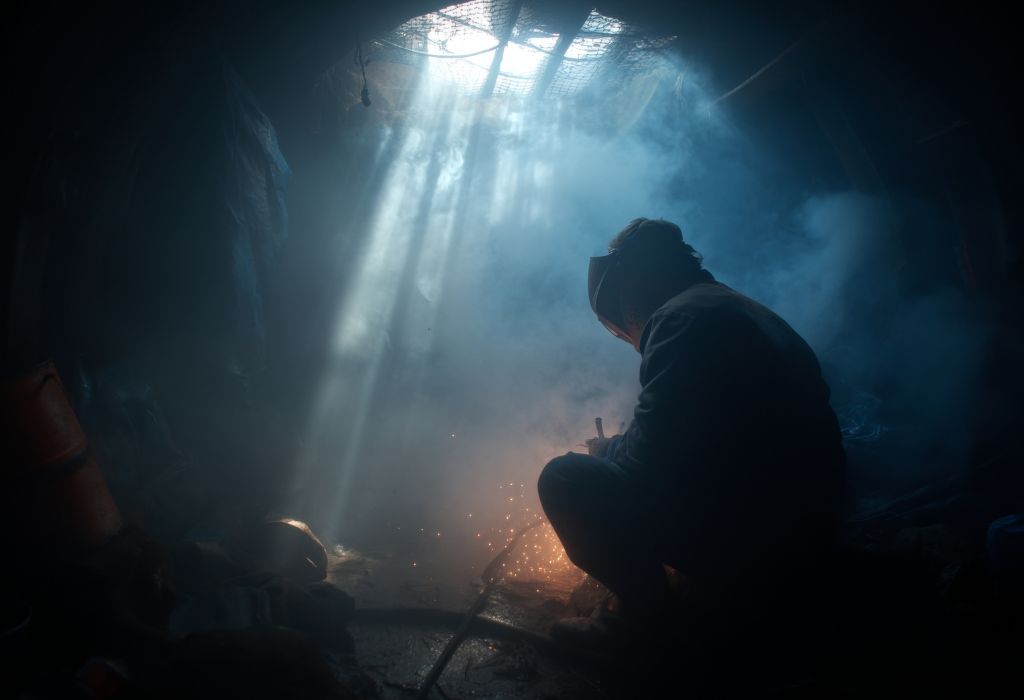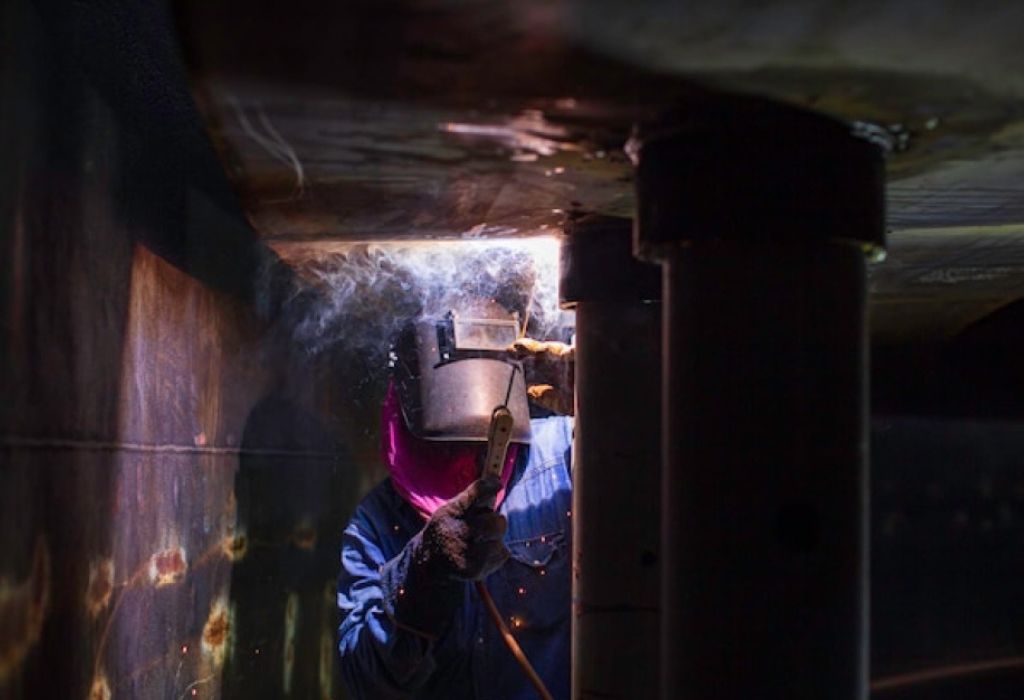The dive bell lowers into the cold ocean, carrying a team of underwater welders ready to repair a subsea pipeline.
Every minute below is carefully calculated, balancing productivity against the risks of pressure, fatigue, and decompression.
This raises the critical question: how long can an underwater welder work each day.
The answer is not a fixed number but depends on dive mode, depth, and strict industry regulations.
Underwater welding is among the most demanding jobs in the world, where limits are set not only by endurance but by physiology and safety standards.
Fatigue, nitrogen absorption, and thermal stress all restrict how much true “welding time” is possible on any shift.
According to the Occupational Safety and Health Administration (OSHA), commercial diving in the United States is governed by 29 CFR 1910 Subpart T, which sets exposure limits, decompression procedures, and supervisory requirements source.
Internationally, the International Marine Contractors Association (IMCA) requires saturation divers to receive at least 12 continuous hours of rest within each 24-hour period .
These standards show that underwater welders cannot simply work unlimited hours, even if physically capable.
Instead, their schedules are tightly managed to balance efficiency with long-term health and project safety.
This guide explores real-world shift lengths, bottom time ranges, and the environmental factors that determine daily limits.
By the end, the question how long can an underwater welder work will be answered with clarity, backed by regulations and industry best practices.
What “Work Time” Really Means in Commercial Diving

When discussing how long an underwater welder can work, it is important to separate total shift length from true welding time. Much of a diver’s day includes preparation, bell travel, decompression, and surface support tasks.
Bottom time, or the actual period spent welding or cutting underwater, is often only a fraction of the overall schedule. Support operations, equipment checks, and decompression requirements extend the total working day far beyond the welding itself.
What counts as “work” for an underwater welder?
It includes welding, inspection, tool handling, bell travel, and decompression.
Is bottom time the same as shift time?
No, bottom time is usually shorter, often a few hours within a long shift.
Do regulations specify a fixed welding limit?
No, exposure limits are set by dive plans and safety standards rather than a single daily cap.
Who controls the working hours?
The dive supervisor manages time according to decompression tables and project needs.
Can conditions shorten a shift?
Yes, currents, poor visibility, or equipment issues can cut time underwater.
OSHA, ADCI, and IMCA: The Rules That Define Time
Underwater welding schedules are shaped by strict safety codes. In the U.S., OSHA regulations form the legal baseline, while globally, ADCI and IMCA guidelines set recognized industry standards.
Each framework defines safe exposure, decompression requirements, and mandatory rest, ensuring that divers are not pushed beyond safe limits.
Which standard sets U.S. minimums?
OSHA 29 CFR 1910 Subpart T covers commercial diving rules.
What do ADCI standards add?
They provide detailed operational procedures widely used by contractors.
What does IMCA require for rest?
Saturation divers must receive 12 continuous hours of rest in 24 hours.
Are fixed welding hours written in law?
No, limits are managed through approved dive plans and conditions.
Do companies impose stricter rules?
Yes, many operators and navies set tighter schedules for added safety.
Surface-Supplied Diving: Typical Daily Windows
Surface-supplied diving is common for nearshore or shallow offshore welding work. These divers often operate within 8–12 hour deck shifts, with only a portion of that time spent welding underwater.
Productive bottom time is usually 2–4 hours per diver in a given day, depending on project depth, water temperature, and decompression requirements.
How long is a surface-supplied shift?
Typically 8–12 hours including prep and decompression.
What is the average bottom time?
Usually 90–120 minutes per dive, with 2–4 hours total in a day.
Does using Nitrox extend time?
Yes, it can allow longer no-decompression limits under approved procedures.
What limits welding time most?
Decompression tables, thermal stress, and task complexity.
Is overtime common?
Yes, but only within safe exposure limits set by supervisors.
Saturation Diving: Shifts, Rotations, and Bottom Time
For deeper or long-term offshore projects, saturation diving is the norm. Welders live in pressurized chambers for weeks, allowing repeated dives without daily decompression.
Saturation teams typically follow 12-hour shifts, with ~6 hours of wet work balanced by 12 hours of uninterrupted rest.
How long can a sat welder work per day?
Usually 12-hour shifts with about 6 hours of in-water tasks.
Is all shift time welding?
No, much is used for bell travel, set-up, and tool handling.
How long is a sat hitch?
Often 2–4 weeks under pressure before decompression.
Is daily rest mandatory?
Yes, 12 continuous hours of rest are required.
Who enforces time limits?
Supervisors and company doctors monitor fatigue and safety.
Depth, Temperature, and Task: The Big Three Constraints

Environmental and physical factors can drastically shorten working time. Depth, temperature, and task type are the primary variables that determine safe exposure.
Deeper dives increase decompression time, cold water accelerates fatigue, and complex welding tasks consume more energy than inspections.
Does depth shorten time?
Yes, greater depth reduces usable bottom time.
Does cold water affect exposure?
Yes, thermal stress limits time even in protective suits.
Do currents and visibility matter?
Yes, poor conditions can force early termination.
Does task type affect time?
Yes, wet welding is more demanding than inspection or cleaning.
Can divers return for multiple dives?
Yes, but only if approved by dive tables and supervisors.
Planning a Safe Day for Underwater Welders
A safe day underwater involves more than welding. Pre-dive checks, bell runs, decompression stops, and post-dive recovery are all factored into the plan.
Supervisors calculate time using decompression tables, fatigue models, and client requirements. Safety always outweighs productivity.
How is time budgeted?
A combination of diving, decompression, and support activities.
Who sets the daily limits?
The dive supervisor based on regulations and the dive plan.
What happens if the job runs long?
It is passed to another team or shifted to the next day.
Are overtime hours allowed?
Yes, but never beyond safe exposure standards.
Do divers get breaks?
Yes, planned intervals are included in every shift.
Typical Daily Numbers by Mode
Reference ranges help illustrate how much time underwater welders actually spend working.
- Surface-supplied divers: 2–4 hours of bottom time within an 8–12 hour day.
- Saturation divers: ~6 hours of wet work in a 12-hour shift, followed by 12 hours of rest.
Is there a maximum welding time law?
No, safe limits depend on the dive plan.
Why does time vary so much?
Depth, decompression, and conditions all play a role.
Can welding be continuous?
No, breaks are required for safety and equipment checks.
Are 10–12 hour days common offshore?
Yes, especially during construction campaigns.
Do seasons affect time?
Yes, extreme cold or storms often reduce daily output.
Productivity vs. Fatigue Management
Even highly trained divers face physical limits. Fatigue management is critical to maintain safety and quality of work.
Modern operations enforce rest periods, medical checks, and careful monitoring to avoid overexposure.
Why not push for longer time?
Because fatigue increases accident risk and reduces weld quality.
How is fatigue managed in sat diving?
Through 12-hour rest cycles and medical supervision.
Do hot water suits extend exposure?
Yes, they help in cold environments.
Does topside support affect efficiency?
Yes, efficient surface crews reduce wasted time.
Can stimulants replace rest?
No, rest and recovery are essential for safety.
Career Span and Rotation Patterns
Beyond daily hours, underwater welders follow structured rotations that shape their careers. Offshore rotations often last weeks, with long breaks afterward to recover.
These cycles prevent long-term fatigue and ensure divers remain fit for future work.
What is a typical offshore rotation?
Usually 2–4 weeks on, then weeks off.
Are long daily shifts sustainable?
Yes, but only with rest periods and recovery days.
Is underwater welding a lifelong job?
No, many move into supervisory or inspection roles after years underwater.
Does experience increase time underwater?
No, safety limits remain constant, but efficiency improves.
Who decides career rotations?
Employers, supervisors, and medical staff together.
Quick Planner: Estimating Usable Welding Time

Divers and contractors use conservative planning methods to estimate safe exposure. These calculations prevent overwork and keep operations within safety margins.
How to estimate surface-supplied time?
Plan for 2–4 hours of bottom time in an 8–12 hour day.
How to estimate sat diving time?
Expect ~6 hours of wet work in a 12-hour shift.
What factors shrink usable time first?
Depth, decompression, and harsh conditions.
What factors extend usable time?
Habitat welding and efficient setups.
What is the final rule?
Never exceed limits set in the dive plan.
Conclusion
So, how long can an underwater welder work each day? The real answer depends on the type of diving, environmental factors, and strict safety regulations.
Surface-supplied welders average 2–4 hours of underwater welding in a day, while saturation divers handle ~6 hours of wet work within a 12-hour shift followed by mandated rest.
By following OSHA, ADCI, and IMCA standards, welders and contractors strike the balance between productivity and safety. The key lesson is that work hours are never arbitrary—they are carefully managed for both performance and survival.

I’m Darrell Julian, the founder, lead writer, and hands-on welding enthusiast behind ArcWeldingPro.com. With more than 15 years of real-world welding experience, I created this platform to share what I’ve learned in the field, in the shop, and in the heat of the arc.


